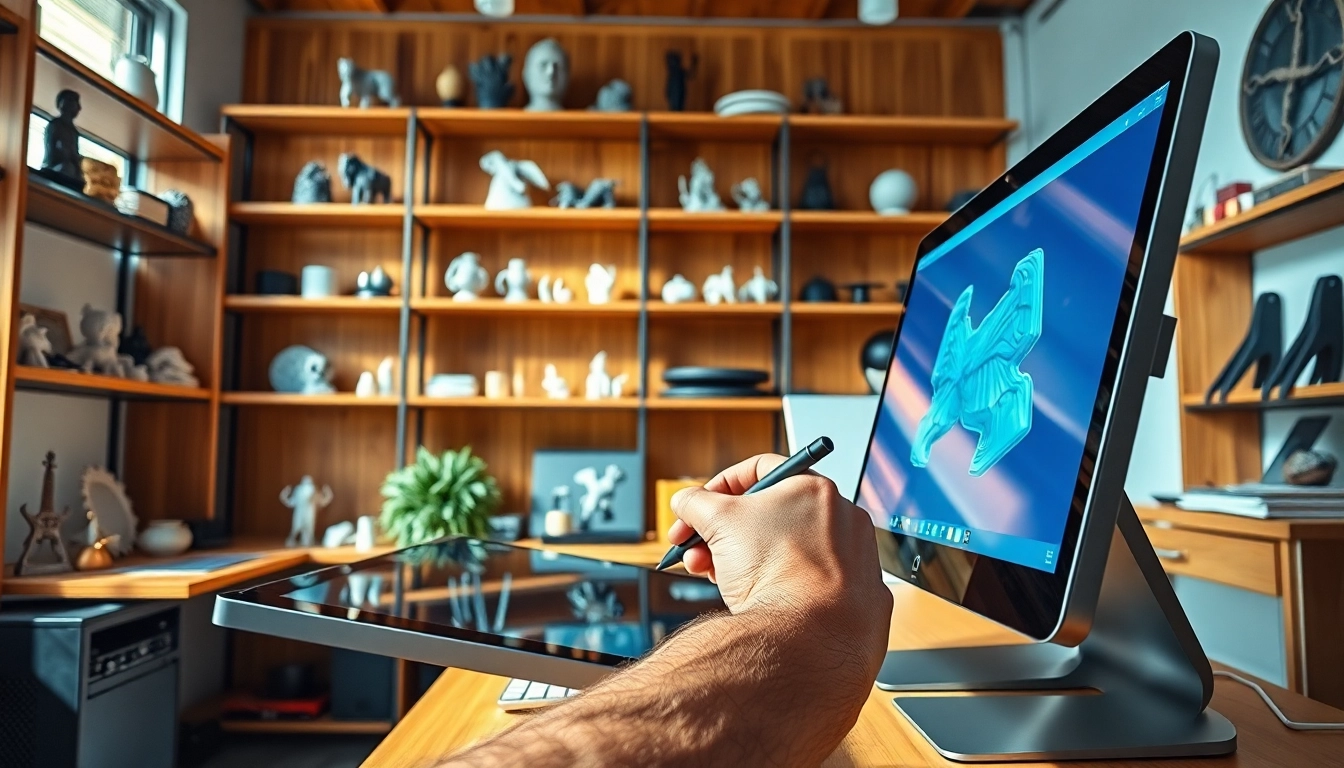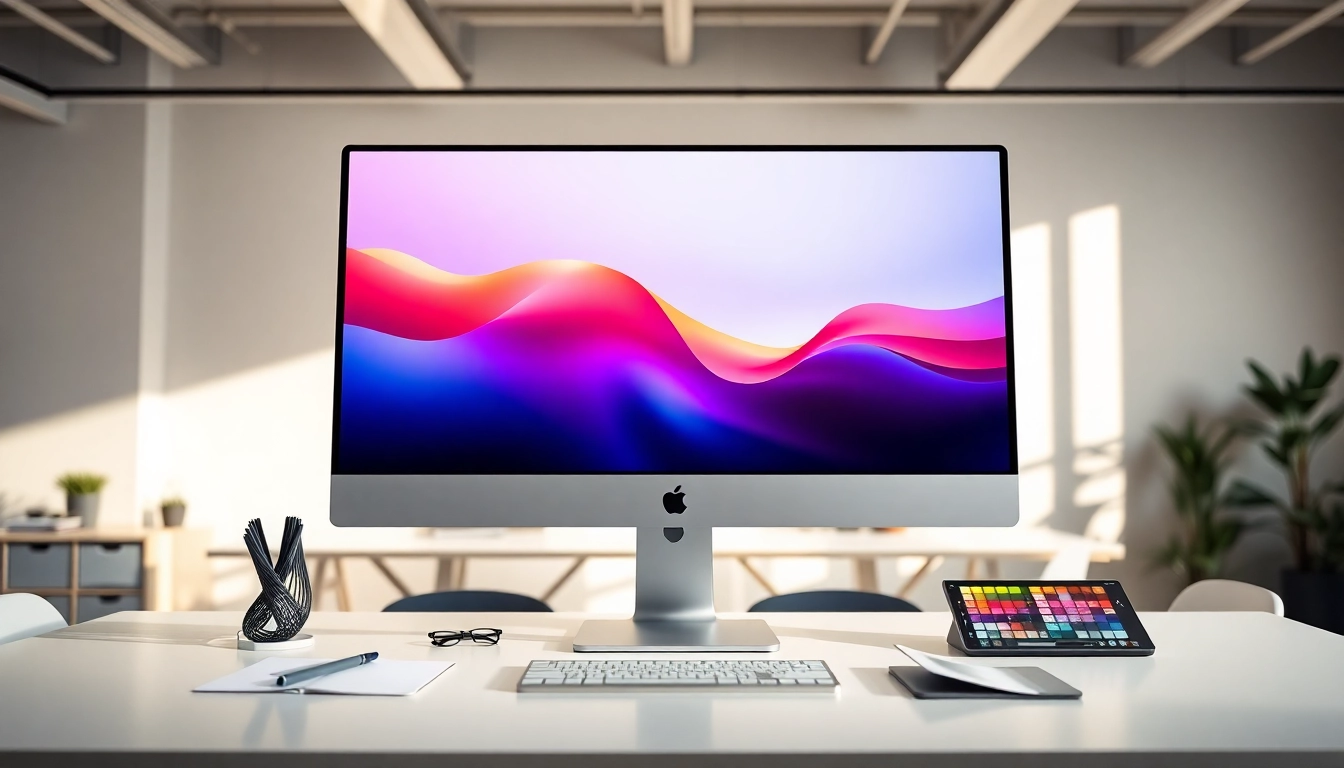Understanding 3D Modeling Services
3D modeling services have become a crucial element in various industries, providing businesses with the ability to create lifelike representations of their products or concepts. Whether you are in the manufacturing sector, entertainment, real estate, or digital marketing, 3D modeling services can significantly enhance your workflow and product presentation. In this comprehensive guide, we will delve into what these services entail, their benefits, and how to choose the right provider for your project.
What are 3D Modeling Services?
3D modeling services refer to the process of creating three-dimensional representations of any object using specialized software. These models can range from simple geometric shapes to complex lifelike structures, encompassing animated characters for video games, prototypes for product development, or virtual environments for architectural visualization. The creation of a 3D model involves several steps, including conceptualization, sketching, modeling, texturing, and lighting. The end goal is to produce a digital asset that can be manipulated or rendered in various ways for examination, animation, or fabrication.
Applications of 3D Modeling in Various Industries
3D modeling services find applications across a multitude of fields:
- Manufacturing and Prototyping: Engineers utilize 3D models to prototype products, allowing for rapid iterations and improvements before physical products are manufactured.
- Architecture and Interior Design: Architects create detailed models of buildings and interiors, providing clients with a tangible sense of space and design before construction begins.
- Entertainment: In the film and video game industries, 3D models are essential for creating characters, sets, and animations that bring stories to life.
- Healthcare: 3D modeling is becoming increasingly popular for creating anatomical models, aiding in surgical planning and educational purposes.
- Marketing and Advertising: Companies leverage 3D models in promotional materials, allowing them to showcase products in dynamic, visually compelling ways that capture consumer attention.
The Benefits of Professional 3D Modeling Services
Engaging with professional 3D modeling services provides businesses with a range of advantages:
- Enhanced Visualization: 3D models provide a clear, accurate representation of products, helping clients visualize end results before production.
- Increased Efficiency: Professional services often use advanced technology to streamline the modeling process, saving time and resources compared to in-house efforts.
- Better Communication: Using 3D models can improve communication among teams and with clients, as everyone has a visual reference that can be discussed and modified as needed.
- Cost Savings: Investing in 3D modeling can reduce costs associated with prototypes and revisions, as adjustments can be made digitally without creating physical samples.
- A Competitive Edge: Companies utilizing high-quality 3D models can differentiate themselves in the market, offering unique and visually appealing presentations of their products.
Choosing the Right 3D Modeling Service Provider
With the proliferating demand for 3D modeling services, selecting the right provider is crucial for achieving desired outcomes in your projects. The following sections outline key considerations to make this process simpler and more effective.
Key Factors to Consider When Selecting Services
When choosing a 3D modeling service provider, consider the following key factors:
- Portfolio and Experience: Review the provider’s portfolio to see examples of their previous work. This can give you insight into their style, capabilities, and the types of projects they excel in.
- Technical Expertise: Ensure the provider is proficient in the software and tools relevant to your project. Familiarity with industry-standard applications such as Blender, Maya, or 3ds Max is essential.
- Client Testimonials: Look for reviews and testimonials that speak to the reliability and quality of the services offered. Positive feedback from previous clients can indicate a trustworthy provider.
- Communication: Effective communication is vital for a successful project. Choose a provider who is responsive and willing to collaborate to bring your vision to life.
- Scalability: Consider whether the provider has the capacity to handle projects of varying sizes. This is especially important for businesses planning to scale their operations.
Comparing Freelance vs. Agency Services
When seeking 3D modeling services, you will often come across two main types of providers: freelancers and agencies. Each has its advantages and disadvantages, which are important to weigh based on your project’s needs:
- Freelancers: Often more affordable, freelancers can offer specialized skills for specific tasks. However, they may have limitations in terms of availability and resources, especially for larger projects.
- Agencies: Typically, agencies comprise teams of experts, providing a comprehensive range of services and capabilities. They are better equipped for large-scale projects but may come with a higher price tag.
Cost Analysis: Budgeting for Quality 3D Modeling
Budgeting for 3D modeling services is essential, but costs can vary widely depending on complexity, the experience of the provider, and the specific requirements of the project. Understanding the potential pricing structures is crucial:
- Hourly Rates: Many freelancers charge by the hour, with rates varying depending on experience and location.
- Fixed Pricing: Agencies might offer fixed project costs based on deliverables, which can help with budgeting.
- Additional Costs: Consider potential additional costs for revisions, post-production, and project management when calculating your budget.
Best Practices in 3D Modeling Techniques
To achieve high-quality results in 3D modeling, employing best practices throughout the process is essential. This section will delve into some fundamental techniques and concepts.
Top Tools and Software for 3D Modeling
Professionals in the 3D modeling field utilize various tools to create stunning models efficiently. Some of the most popular software includes:
- Autodesk Maya: A highly versatile tool favored for animation, modeling, and rendering.
- Blender: An open-source software that has gained popularity for its comprehensive range of capabilities, including sculpting and animation.
- 3ds Max: Known for its architectural visualization features, 3ds Max is commonly used in the gaming and film industries.
- Cinema 4D: Renowned for its motion graphics capabilities, it’s favored in advertising and digital media.
- ZBrush: Specialized in sculpting and highly detailed modeling, often used for character creation.
Essential Skills for Successful 3D Modeling Artists
The realm of 3D modeling requires a combination of technical and creative skills. Essential skills for successful artists include:
- Artistic Sense: A strong understanding of design principles, including composition, color theory, and texture.
- Attention to Detail: Ability to focus on the minutiae that can transform a decent model into a stunning one.
- Technical Proficiency: Mastery of relevant software and an understanding of the technical aspects of modeling and rendering.
- Problem-Solving: Skills in troubleshooting issues that arise during the modeling process and finding creative solutions.
- Collaboration: Ability to work effectively with other team members, such as animators and designers, to ensure cohesive final products.
Iterative Design: Importance of Feedback and Revisions
In 3D modeling, iterative design is vital for refining models. Collecting feedback from stakeholders and making necessary revisions fosters a collaborative environment, leading to improved outcomes. Implementing multiple review stages allows for early identification of issues and ensures the final model meets the client’s expectations.
Enhancing Your 3D Models for Better Engagement
Producing a quality 3D model is just the beginning; enhancing these models is essential for maximizing engagement and effectiveness. Below are strategies to elevate your 3D models.
Tips for Creating Realistic Textures and Lighting
Textures and lighting are crucial components that significantly affect the realism of your 3D model. Here are some tips for achieving impressive results:
- UV Mapping: Properly unwrap the model to create a UV map that allows the texture to wrap accurately around the model.
- High-Quality Textures: Use high-resolution images for textures and consider creating custom textures to enhance uniqueness.
- Lighting Techniques: Experiment with different lighting setups, including three-point lighting, to illuminate your model effectively and create mood.
- Shading: Apply appropriate shaders to give materials their characteristic reflections and surfaces, making the model lifelike.
Integrating Animation with 3D Models
Animating 3D models can bring vitality to static images, making them more engaging for viewers. Here are some considerations for integrating animation:
- Rigging: Create a skeletal structure for your models to facilitate realistic movement.
- Animation Techniques: Utilize keyframe animation for specific movements, and explore the use of motion capture for lifelike results.
- Rendering Animation: Be aware of rendering requirements. Animations often require higher computational resources, and optimizing the model can improve performance.
Case Studies: Successful 3D Models and Their Impact
Examining successful case studies can provide insights into the effective use of 3D modeling:
- Architectural Visualization: A prominent architectural firm used 3D models to allow clients to visualize a new office building before construction, resulting in a 30% reduction in design alterations post-approval.
- Product Design: A tech startup utilized 3D modeling for their prototype smartphone case, allowing rapid iterations based on user feedback, accelerating time-to-market.
- Advertising: An e-commerce business increased sales by 25% after adopting 3D models for their product listings, showcasing items in interactive formats.
Future Trends in 3D Modeling Services
The field of 3D modeling is continually evolving, influenced by advancements in technology and user demands. The following trends are shaping the future of this industry:
The Impact of AR/VR on 3D Modeling
Augmented Reality (AR) and Virtual Reality (VR) are reshaping how 3D models are used and experienced. Businesses are increasingly integrating AR and VR technologies to provide immersive user experiences. For instance, retailers are leveraging AR to allow customers to visualize how products will look in their own environments before purchasing, greatly enhancing consumer interaction and boosting sales.
Sustainable Practices in 3D Modeling Services
With sustainability becoming a priority globally, many 3D modeling services are shifting to greener practices. Utilizing digital prototypes reduces waste associated with physical models, and companies are increasingly adopting sustainable practices in their workflows, including the use of eco-friendly materials and energy-efficient technologies in 3D printing processes.
The Role of AI in 3D Modeling Development
Artificial intelligence (AI) is playing an increasingly significant role in 3D modeling. From automating repetitive tasks to generating models based on data inputs and machine learning algorithms, AI is streamlining many aspects of the modeling process, increasing efficiency, and allowing artists to focus more on creativity and innovation.














Leave a Reply